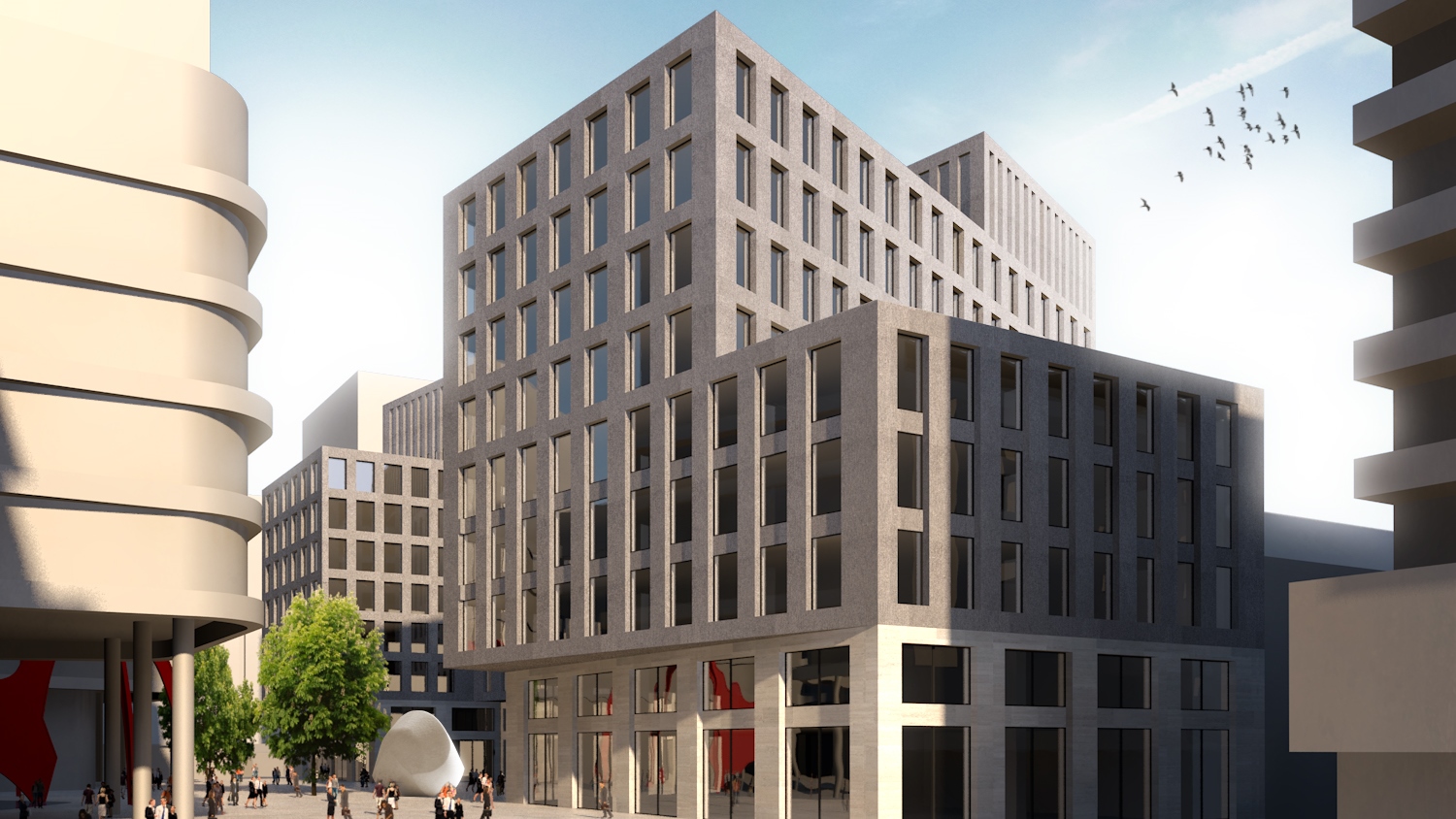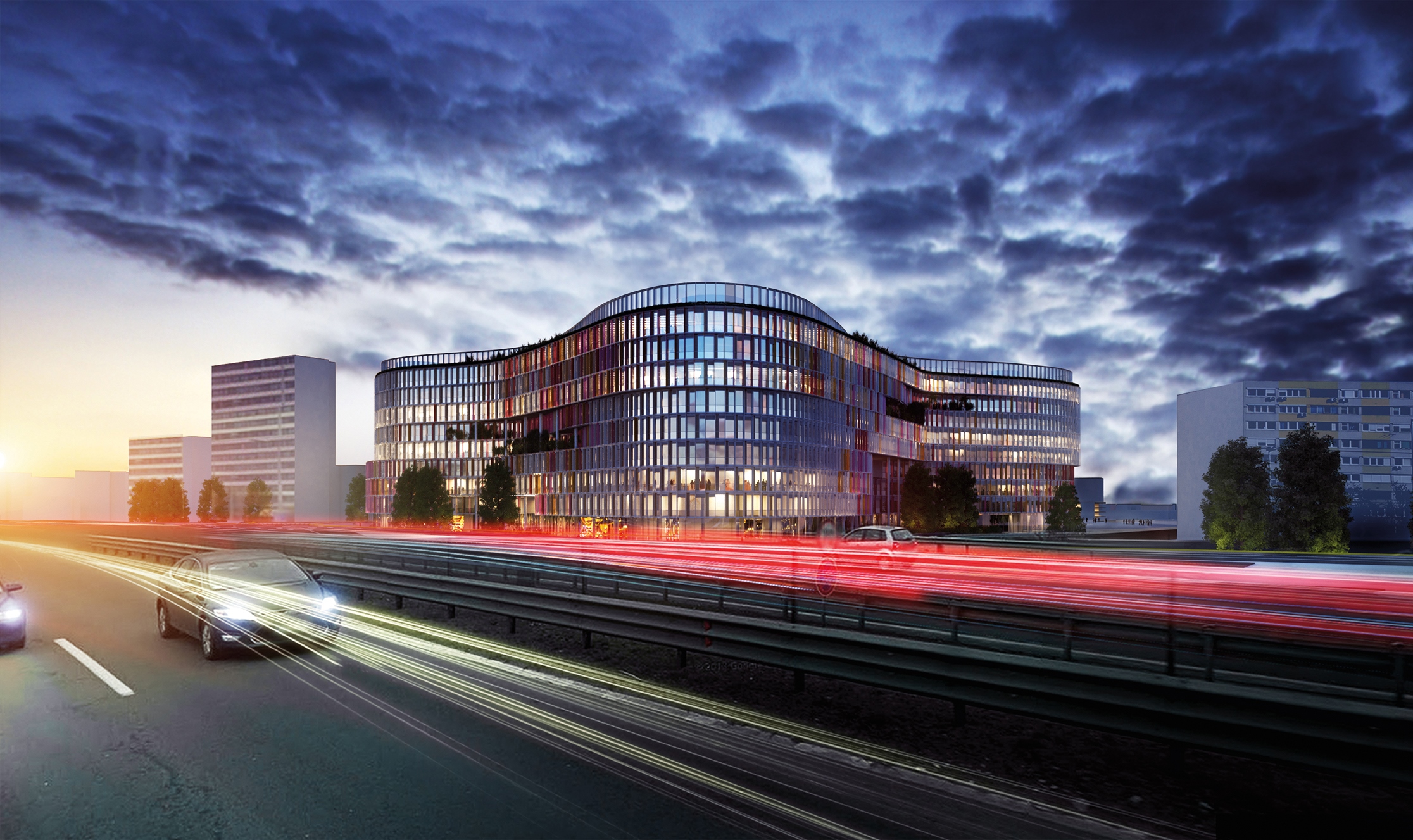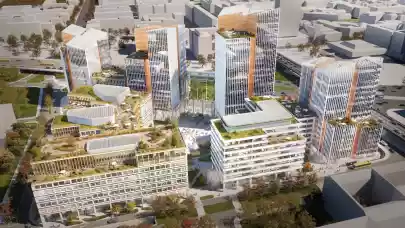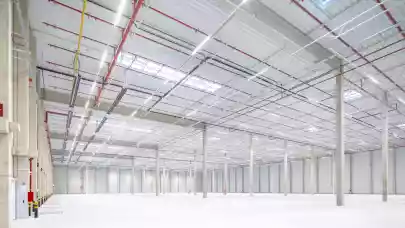By now optimism is widespread both on the housing and office property markets, and the transformation of ideas into tangible plans and then buildings is becoming increasingly common. There is practically no district in the city where there aren't housing or office blocks being built. While the greatest developments in the agglomeration are primarily warehouses, housing developments appear more frequently as one heads into the city, as do offices in the more important hubs.
The deflated mood that characterised the property business during the recession is now definitely over, as a result of which the number of available offices is expected to grow. Meanwhile, yields may further decrease from its current 6.75%, nearing the 5% that typifies Warsaw or the even lower level in Western Europe. Simultaneously, residents of the city can clearly see that many districts may go through a major transformation in the coming years.
Corvin Promenade
One of the most spectacular transformations in 21st century Budapest is undoubtedly the rebuilding of the section parallel to Üllői Road in Józsefváros. The once dilapidated area of the 8th district was transformed through a complex city development project into the Corvin District, housing apartments, stores and offices. The 22-hectare development is one of the largest and most expansive in the region, the last elements – including a new office building – of which are being completed these coming months.

Office corridor on Üllői Road?
The biggest interconnected corridor of offices has developed along Váci Road, over the northern end of metro line M3, where there are currently several office blocks being built. Most cities tend to have the majority of their offices located on the corridor between the airport and the city centre. The same could be expected for Budapest, too, in the future. The rise in the popularity of offices on Üllői Road could make way for a southern office corridor. The beginnings of this can already be seen in the previously mentioned Corvin District and the Telekom building being built by Népliget. The centre will be completed in the second half of 2018 according to plans, for an investment of almost 50 billion HUF. With a floorspace of 57 thousand square metres, it is currently the biggest single building block office project in Hungary.

Agora Budapest
Besides the South Pest districts, the largest developments are on the Váci Road corridor. Of these, HB Reavis' development of Agora Budapest promises to be one of the biggest office complexes on Váci Road. At the corner of Róbert Károly Ring Road and Váci Road, a 136 thousand square metre office space is planned, where 12 thousand people may be employed after completion. According to plans, the construction project, to be completed in 2023, will also house 11 thousand square metres of retail space. The market value of the project is expected to reach HUF140 billion.

The construction will begin with the eight-storey, 34,500 square metre Agora Hub, which will include a 2500 square metre co-working office. The next stages of the development are still in planning, but they may include a 90 metre high office tower too. The first stage of construction is expected to be completed by the end of 2018. Permits for the Agora Tower are expected to arrive in June, and so the company will construct two stages at once.
BudaPart
While the Pest side is more popular among developers, the biggest project is happening on the Buda side. BudaPart is a 24-hectare project, which can be compared in size to the Corvin Promenade. Thousands of apartments are to be built in the coming years by the Kopaszi-gát area, and this promises to be the most spectacular development in the city. Besides apartments, the currently empty building site will also feature the same number of offices too. Construction will begin this year and will be completed in several stages, on the land purchased by Market Csoport in 2015.

The developer aims for some 560-600 thousand square metres of buildings, which the investor aims to complete in 8-10 years. About half of these would be offices, the other half apartments, but the plans also include a large promenade leading down to the Danube.
The western gate of the capital
BudaPart is not the only project making headlines in the 11th district. By the entry to the motorways, which is also the western gate of the city, is an area that developers are eager to invest in. This includes – though technically it belongs to Biatorbágy – the half-finished Tópark project, which houses 350 flats on 35 thousand square metres, and 15 thousand square metres of retail properties, 55 thousand square metres of offices, and a 150-200 room hotel, as well as a thousand-person conference room.
Finally, the hub created by the remodelled Etele Square must be noted. This is where Futureal plans to construct its 70 thousand square metre office park, Budapest One.

The combined size of the projects listed above is 800-900 thousand square metres, which makes up more than a quarter of the total office space in Budapest. This indicates that the range of available offices in Budapest will be considerably expanded in the coming years. As the growing stock will likely push up the record-low vacancy rate, tenants will finally have a chance to find the right space in the right location. However, there is a danger in developers dumping so many buildings onto the market at once, and in the long run this may leave buildings empty and lead to underwhelming profits. Therefore, it would be prudent of developers to bring their products to the market in stages, leading to stable expansion and controlled growth in the property market.









